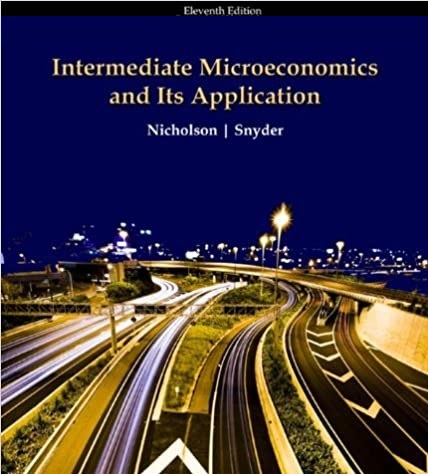
Intermediate Microeconomics and Its Application 11th Edition by Walter Nicholson,Christopher Snyder
Edition 11ISBN: 978-0324599107
Intermediate Microeconomics and Its Application 11th Edition by Walter Nicholson,Christopher Snyder
Edition 11ISBN: 978-0324599107 Exercise 1
The U.S. government (and many other governments) offers low-interest loans and direct grants to some students tending universities. Tuitions at most universities are also often subsidized with tax revenues or incomes from endowments. If higher education really does pay off in terms of future earnings, are such subsidies necessary or desirable?
Explanation
Higher education promises higher income careers in future. This in itself is a strong incentive to invest in higher education at present. The subsidy programs impose taxes on average working people (who have not gained university education) to pay for the tuition of future high earners. That is, the government subsidizes education of future white collar professionals at the expense of blue collar workers.
However, rising subsidies on college education over the years have fueled inflation in costs of education. Further, the tuition and other college costs have risen. Moreover, grants on education provide incentive to the families to fraud and misreport their incomes.
Thus, it is not necessary to provide subsidies on education because students have incentives to invest in education today for benefits tomorrow. It is not desirable as it may result in economically not acceptable events.
However, rising subsidies on college education over the years have fueled inflation in costs of education. Further, the tuition and other college costs have risen. Moreover, grants on education provide incentive to the families to fraud and misreport their incomes.
Thus, it is not necessary to provide subsidies on education because students have incentives to invest in education today for benefits tomorrow. It is not desirable as it may result in economically not acceptable events.
Intermediate Microeconomics and Its Application 11th Edition by Walter Nicholson,Christopher Snyder
Why don’t you like this exercise?
Other Minimum 8 character and maximum 255 character
Character 255


